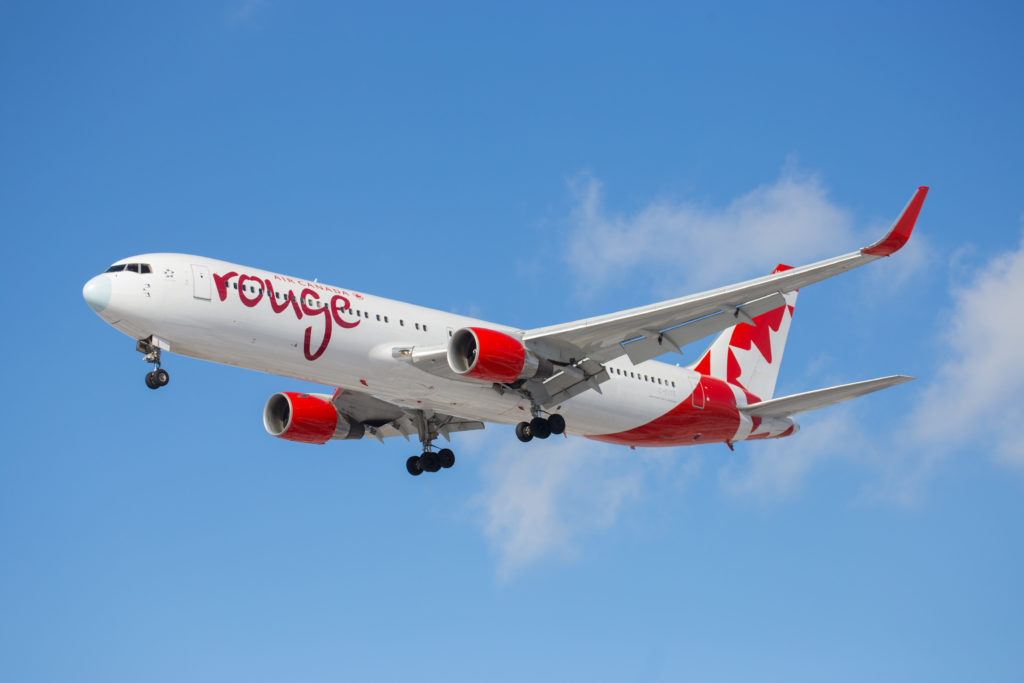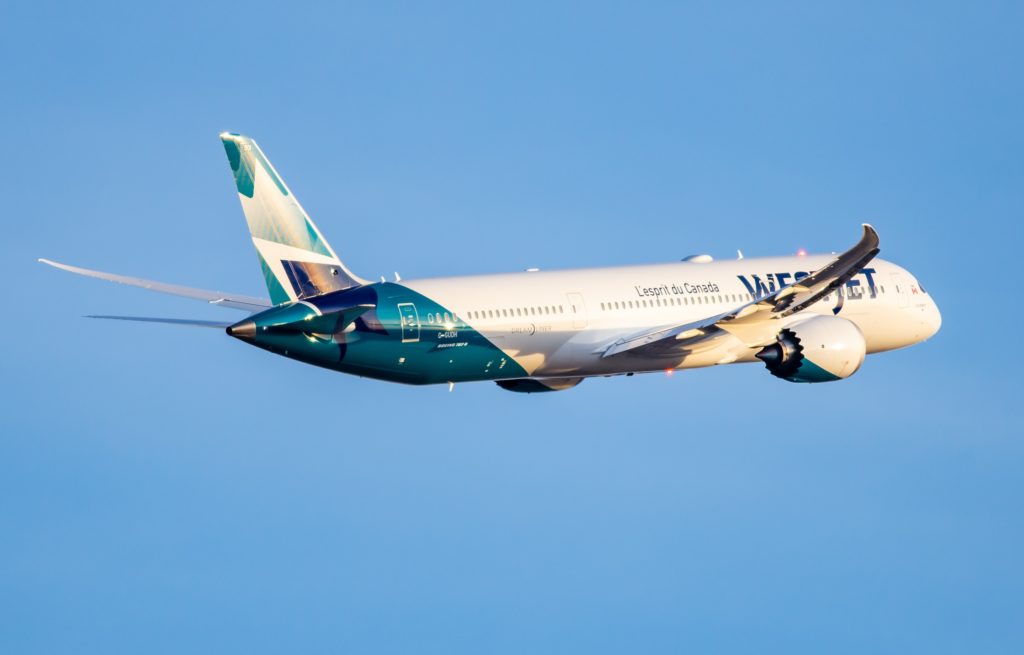Estimated reading time 11 minutes, 44 seconds.
CAPA – Centre for Aviation, a global aviation market intelligence agency, held its first-ever event on Canadian soil. The 2019 CAPA Canada Aviation Summit, hosted in Winnipeg this September, brought together approximately 250 senior executives and leaders in the field to discuss the Canadian market.

Air Canada and WestJet have long dominated the Canadian skies, but ambitious ultra-low-cost carrier (ULCC) start-ups, new partnerships, geopolitical events, regulations and industry developments are changing the playing field.
Today, competition in the market is fierce, with over 100 airlines operating in our skies. At the summit, leaders from both Canadian airlines discussed their methods for long-term stability and how they are adapting to these competitive and external forces.
Air Canada: 82 years strong
Lucie Guillemette, executive vice-president and chief commercial officer at Air Canada, spoke to the company’s accomplishments and plans for the future. Strong brands, a comprehensive network, schedule and the positioning of three primary hubs – Vancouver, Toronto and Montreal – are the basis for Air Canada’s long-term stability. Transatlantic growth with partners in Star Alliance has been achieved by connecting Canada’s and Europe’s top hubs, allowing for cross-carrier selling and a multitude of connection options for customers.
“Rouge’s swing capacity from sun markets in the winter to transatlantic in the summer has been fundamental to our strategy, allowing us to compete with ULCCs, enter new markets and cement our position as the largest foreign airline in the U.S.,” said Guillemette. Regional carrier Air Canada Express has grown 142 per cent year-on-year and now serves 300,000 passengers weekly. Express’ focus is to build connectivity and feed network hubs.
A revamp of Air Canada’s loyalty program has been underway since the acquisition of Aeroplan from Avion last year. The launch, expected in 2020 alongside the unveiling of their new reservation system, will transform how the airline interacts with customers.
The acquisition of Air Transat was approved by stakeholders but remains conditional on regulatory approvals and other closing conditions. The transaction will benefit travellers with increased connections, destinations and flight frequencies. Air Canada plans to preserve the Air Transat brand and Montreal head office.
WestJet: Making aviation history
Onex’s purchase of WestJet for $5 billion has been called the largest private equity deal in aviation history. The acquisition has received approval from the minister of Transport and the Competition Bureau of Canada, but the Canadian Transportation Agency continues to investigate Onex’s foreign ownership.

“Between 2013 and 2018 WestJet grew too big, too fast. We were inducting aircraft at a rate of 15 per year. Adding 75 aircraft over five years was difficult to sustain,” explained WestJet, CEO and president, Ed Sims.
In its current five-year strategy, WestJet has decreased this to five aircraft per year. “We will continue to increase our growth capacity and available seat kilometres, but a significant part of our future growth will come from our partnerships with Delta, and other joint ventures we are looking to build with Air France, KLM and Virgin Atlantic. Growth doesn’t have to be on WestJet metal,” added Sims.
The Delta Joint Venture agreement allows the carriers to expand their codeshare agreement and compete with Air Canada. “The future for WestJet is forming fewer, but deeper, relationships in joint ventures,” said Sims.
Swoop will remain a distinct, independent subsidiary competing in the ULCC market. Airfares remain 35 to 40 per cent lower than WestJet, making flying affordable for many new customers.
Market disruptions – the MAX fiasco
The grounding of the Boeing 737 MAX in March 2019 had widespread effects on the industry, creating a massive logistical and financial impact on travel worldwide. Boeing had delivered more than 370 MAXs with 5,000 more on order.
Air Canada pulled its 36 MAX aircraft from service before the grounding. Massive schedule adjustments were made to deal with the fallout – aircraft had to be changed, resulting in the suspension of various routes. Leases of planes in the airline’s fleet were extended and the early delivery of other aircraft on order was hastened. Non-essential maintenance, including Wi-Fi installation and livery painting, were deferred. Rouge and its partner operations were critical in their response. Air Canada has managed to cover 96 per cent of its flying every month from April 2019 until today.
WestJet’s experience was similar after grounding their 13 planes. Expenses continue though, as MAX pilots and crew continue to be paid.
East versus West: Are our settings off?
In an economy poised to see a massive shift in trade, are Canada’s settings off? The majority of growth over the next 20 to 30 years will be focused in Asia, particularly China. It is expected to become the world’s largest market by 2020. Canada, however, maintains an eastward focus on Europe despite the market’s lack of growth since 2017.
Air Canada and Air China secured the first joint venture between a Chinese and North American carrier in 2018. Unfortunately, a capped market has strangled growth in routes to China. Asia is highly competitive, complex and low yielding from an airline point of view. If Canada is to benefit from this market it needs to find a different way to operate within it, change policies and become more reactive.
“The challenge with Asia is that it is difficult to serve because of distance and overcapacity in the market, which translates into lower fares,” said Mike McNaney, vice-president, Industry, Corporate and Airport Affairs for WestJet.
“There is lots of growth coming from the transpacific, but the capacity is growing faster than the demand. When capacity demands are back in balance, we will launch service. One thing we are certain about is that we will not fly profitless volume. We need deep analysis on the markets, and we will not rush into that decision.”
Over-regulated industry
Canada remains one of the world’s most expensive jurisdictions in which to fly. Much of that has to do with the cost of air travel rates, taxes, and fees. Over the last 10 years, fares have declined incrementally due to competition and changes in technology, yet the fees and tax rates faced by airlines increased at the same exponential rate over the same period.
“We face tremendous headwinds on regulatory fronts in Canada with the excessive layering of regulations – the passenger bill of rights, carbon tax rules, flight duty time and labour code amendments. Regulations are set with the right intention to protect consumers. Our concerns are that the exorbitant costs they add to an already sensitive business, airlines cannot absorb all of that cost,” explained Ferio Pugliese, senior vice-president, Air Canada Express and Government Relations.
“Regulation is excessive in this country, and we need to be very aligned when we deal with it,” said WestJet’s Sims. “It puts enormous pressure on our ability to provide competitive airfares to customers. According to colleagues in the Canadian transport industry, the new Air Passenger Protection Regulation, APPR, will impose a cost of around $2.75 per guest. After its corporatization, CATSA will likely impose a cost of around $0.50 per guest. This neatly adds $3.25 to each ticket, the margin per guest that WestJet made last year.
“I am up for the difficult, but I am not up for the impossible,” he continued. “I think airport privatization needs to be discussed in Canada and is an issue that WestJet is strongly in favour of to keep airfares competitive.”
Impact of technology
New developments in technology could radically change the way we fly.
“Air Canada is in the final stages of a new reservation system and loyalty plan. We have systems that are 25 to 30 years old, and the challenge has been in replacing those underpinning systems,” said Catherine Dyer, senior vice-president and chief information officer at Air Canada. It’s a process she compares to doing a brain transplant.
Growth in artificial intelligence (AI) has the opportunity to increase travel personalization. Air Canada has begun development on two AI programs, one in cargo and the other in revenue management. They have also identified an additional 31 opportunities for AI and machine learning to augment the work of airline staff.
Flygskam
The flygskam movement, which loosely translates to “flight shame,” has been fuelled by activists in Sweden and has garnered attention worldwide. Already, politicians and governments are stepping in; France’s transport minister announced a new “eco-tax” to be charged on all flights that take off from the country, with funds to finance other modes of transportation. This is not good news for an already overtaxed industry.
“Aviation is responsible for two per cent of the world’s carbon dioxide emission,” said Sims. “Every day, the industry is working to reduce its financial footprint through the reduced use of auxiliary power units, single-engine taxiing, or increased use of battery and electric vehicles. We are already making significant steps to reduce our emissions.
“It is somewhat ironic that the world’s most fuel efficient narrowbody aircraft have been grounded,” he continued. “We need to let airlines self-regulate and self-manage to reduce emissions rather than imposing more legislation. The development of effective biofuels is something we want to pursue and promote actively, and we will be the best managers of that.”
The aviation community is a dynamic and engaging industry that is always moving at a rapid pace. In a world of over-regulation, stiff competition and hypersensitivity to global events, Canadian carriers and worldwide partners are continually correcting course to overcome the next hurdle.
Tania Moffat is a freelance writer, editor, publisher and photographer. She has worked in the publishing industry for the last 15 years on a wide variety of B2B and consumer publications, both in print and online. You can connect with her at info@chiccountrylife.com.








